The year of eco-anxiety: Us and the fear of environmental chaos
04 de December de 2024

Valdeniza Vasques and Vinícius Teixeira – Special for Cenarium
Fabyo Cruz and Ian Vitor Freitas – From Cenarium
Translated from Brazilian Portuguese by Gustô Alves
MANAUS (AM) – “Food, transportation, drinking water, hunting, fishing. Everything became more difficult during the drought. What worried me the most was having a medical emergency. When we don’t have the river to move around, the concern is immense. It weighs heavily on the mind and greatly affects mental health.” The words of Neurilene Cruz, 40 years old, an Indigenous woman from the Kambeba people in the Amazon, describe the reality of many residents of the region who directly feel the impacts of the climate crisis and suffer from eco-anxiety—the “chronic fear of environmental catastrophe.” In a scenario of extreme climate events, the population faces feelings of distress in the face of a difficult present and an uncertain future.

In Brazil, which has the most anxious population in the world according to the World Health Organization (WHO), it is no surprise that “anxiety” was chosen as the word of the year in a survey by the Instituto de Pesquisa Ideia, conducted in partnership with Cause and PiniOn.
The definition of eco-anxiety, also called “climate anxiety” or “environmental anxiety”, as the “chronic fear of environmental catastrophe”, was coined by the American Psychology Association (APA). This condition describes the feeling of helplessness and hopelessness in the face of climate change and can manifest with symptoms of generalized anxiety, such as irritability, insomnia, and an inability to relax.
In Brazil in 2024, this anguish has concrete reasons: historic droughts in the Amazon rivers, catastrophic floods in Rio Grande do Sul, extreme heat, and record-breaking wildfires. According to MapBiomas, between January and November 2024, fires had already consumed 29.7 million hectares of the Amazon, Cerrado, and Pantanal—an increase of 90% compared to the same period in 2023 and the largest burned area in the last six years. The difference from the previous year is 14 million additional hectares. The wildfires covered the sky with clouds of toxic smoke.
The environmental crisis intensifies anxiety in a country already highly anxious, where 18 million people suffer from anxiety disorders, according to the WHO’s latest major global mental health survey. Thus, for 22% of respondents in the Instituto de Pesquisa Ideia survey, “anxiety” was the word chosen to define the year 2024.
In the Amazon region, the increase in psychological teleconsultations from the Saúde na Floresta (Health in the Forest) program, by the Fundação Amazônia Sustentável ((Sustainable Amazon Foundation (FAS)), serves as an indicator of how the environmental crisis has affected the population’s mental health. Between August and October 2024, 229 teleconsultations in psychology were recorded for residents of communities in Conservation Units (UCs) in Amazonas—an 18% increase compared to 2023. From August to September, 23% of patients reported the impacts of severe drought as their main complaint. From September to October, that number rose to 33%. Reports include symptoms of anxiety, depression, social phobia, family and marital conflicts, Post-Traumatic Stress Disorder (PTSD), and grief.
Neurilene, who lives in the community of Três Unidos, 62 kilometers from Manaus (AM), witnesses the effects of climate change on the health of her community. In addition to being a tourism entrepreneur, she works as an Agente Indígena de Saúde (Indigenous Health Agent ((AIS) and has observed an increase in mental illness related to the drought.
“There have been many cases of anxiety and even depression due to a series of factors occurring in the world. The drought is one of the triggers. Since the pandemic, we have observed these cases of anxiety in children, teenagers, and adults. Many people are worried about how they will live, how they will move around, and how they will get food for their families. This deeply affects mental health, especially for mothers,” Neurilene said, adding that the possibility of a medical emergency without a way to reach a hospital made her very nervous. “Restlessness, insomnia, nervousness, because the thought comes that at any moment we might get sick and have no way to get to Manaus. That anxiety sets in, the inability to relax the mind to sleep because the worry is always there, at full speed.”
In Amazonas, the 2024 drought impacted more than 800,000 people and 200,000 families, according to data from the state’s Civil Defense. It led to the isolation of communities and made access to water, food, and essential services like health and education more difficult. In comparison, the previous year saw 599,000 people and 150,000 families affected by the drought.
With dry rivers, community members face a decline in financial income and find themselves isolated, struggling to obtain basic survival items. The school calendar is interrupted, electricity supply becomes unstable, and households become overcrowded for long periods, increasing family conflicts. Extreme heat also reduces physical activity—an essential tool in combating anxiety and depression.
Concerned Youth
Among Brazilian youth, the fear of environmental imbalance is very present. According to a study published in the scientific journal The Lancet Planetary Health in 2021, more than 60% of young people between 16 and 25 years old in Brazil say they are “very” or “extremely concerned” about climate change. This is the case for climate activist João Victor da Silva, 15 years old, a native of Caratateua Island, known as “Outeiro,” one of the eight administrative districts of Belém (PA). The emotional effects of the climate crisis became more evident in João Victor during the period of drought and wildfires in Outeiro.
“In the beginning, I didn’t even know this existed because it’s not something we talk about much. But over time, my family started noticing signs of anxiety in me. I think the peak was during the drought and wildfire period on the island. Many times, I was up late at night calling the Fire Department, trying to help residents who reported fires near their homes,” João Victor commented.

Psychological Support
Cristina Maranghello, a clinical psychologist responsible for teleconsultations in FAS’s health program, observes that an abrupt change in routine affects the sense of security and increases unpredictability regarding the future. “The biggest difference noticed in reports before and during the drought is related to the intensification of concerns and the increased sense of vulnerability. Before the drought, complaints were more often related to ‘everyday challenges,’” she commented.
Although the terms eco-anxiety, environmental anxiety, and climate anxiety do not have defined diagnostic criteria in the DSM-V (Diagnostic and Statistical Manual of Mental Disorders) of the American Psychiatric Association, the psychologist emphasizes that many symptoms are related to this phenomenon.
Maranghello is categorical: “It is evident that concerns about the impact of climate change directly affect patients’ mental health, especially in contexts where subsistence depends directly on environmental balance. These concerns are experienced daily, with concrete and immediate consequences in the Amazon,” she stated.
In the Três Unidos community, there are still prejudices surrounding the topic of mental health, preventing people from seeking help, according to Neurilene Cruz. “As a health professional, we recognize those with ‘sunken eyes,’ who don’t sleep well, worried about food and debts to pay. Not everyone has the courage to talk, but we manage to speak with some. I advise them to talk because the more you hold onto feelings of anguish and sadness, the worse our minds get. We try to minimize these people’s anxiety and give them the confidence to talk; otherwise, it becomes a deep pain inside,” she shared.
Rivelino de Carvalho, 45 years old, a resident of the Boa Esperança community in the Amazonas’ municipality of Manicoré, 350 kilometers from Manaus, relies on FAS’s psychological teleconsultation program to deal with daily challenges. For him, the biggest concern is that the drought will be worse in 2025, affecting his community’s access to food, which was already reduced to just two boats this year.
“It’s not just my concern but that of almost the entire population of Manicoré, especially my community. If, God forbid, the drought worsens, the boats that bring food to our municipality might stop. It was announced that the barge bringing diesel for energy in the communities would stop this year, but, thank God, that didn’t happen. However, we know that at some point, it could happen due to climate change,” said Rivelino, who relied on psychotherapy to strengthen himself emotionally in the face of the drought’s challenges.
For the community member, the path forward is for everyone to do their part to preserve the Amazon—a “small-scale effort,” but necessary to combat the advance of the climate crisis. However, Rivelino points out that community efforts are meaningless if the major culprits behind deforestation and wildfires are not held accountable.
“My community is very engaged in preservation and sustainability; we dispose of waste correctly, reuse fallow lands to cultivate our crops. But then you have the big businessmen, the farmers. While we use one and a half hectares, they deforest 20,000, 30,000 hectares. That’s what causes devastation in our environment. And then there’s the issue of waste: the community preserves, but these boats dump all their garbage into the river. To them, the river is like a landfill; they use and benefit from it but have no care for it,” he denounced.
Under the Weight of Climate Anxiety
Distant climate events also emotionally impacted the young Paraense João Victor da Silva: “During Hurricane Milton in Florida, I set up multiple screens in my living room to follow the news. It was as if I were living through it, even though I was so far away.” According to scientists from the World Weather Attribution, Hurricane Milton was intensified by climate change, with a 20% to 30% increase in rainfall and a 10% increase in wind strength. The tropical cyclone left 16 dead and caused $34 billion in damages.
Despite not having a formal diagnosis, João reflects on the severity of the issue. “I’m 15 years old, and while I could be studying or doing other things, I’m dealing with this anxiety that arises from climate problems. This should be a warning for society. If climate anxiety is rare today, tomorrow it could become very common,” the young man said.
Another Paraense struggling with climate anxiety is geographer Ana Luiza Araújo, 34, a resident of the Terra Firme neighborhood on the outskirts of Belém. “I experience this climate anxiety because I see my daily life closely tied to the difficulty of advancing public policies in the area of basic sanitation here in Belém. When I see extreme climate events, I think about how the outskirts will cope with them. People are not prepared. Our Civil Defense has neither financial autonomy nor the tools to guide us in emergencies,” she described.
She also highlights everyday challenges, such as flooding that hinders mobility. “I live near the Cipriano Santos canal. Before the Tucunduba construction, the canal would overflow and flood everything. That has already prevented me from getting to work several times. I imagine the impact this has on children, the elderly, and people who need daily medical treatment. This generates anxiety because the problems are there, but public management does not keep up,” the geographer stated.
It is worth noting that Belém will host the 30th United Nations Climate Change Conference, COP30, in 2025, where representatives from 198 countries will gather to decide on commitments and investments to prevent and mitigate the effects of the climate crisis. COP30 will be held in the state that led Brazil in the number of wildfires in 2024: as of December 14, Pará had recorded 54,837 fire outbreaks, accounting for 20.1% of all fires in the country. The municipalities of São Félix do Xingu and Altamira top the ranking of Brazilian cities with the most fire outbreaks this year, according to data from the National Institute for Space Research (Inpe).
For Ana and João, eco-anxiety is not just an environmental issue but also a mental health concern. Ana Luiza explains how meditation and Buddhism help her cope with the problem. “Buddhism talks about impermanence, that the world has always been chaotic. I try to calm myself by thinking about that, but it’s hard not to feel anxious seeing how public policies don’t advance,” she shared.
João, in turn, emphasizes the need to discuss the issue broadly: “We talk so much about climate change but ignore its impact on mental health, especially among young people. It’s something we need to take seriously,” he stated.
Ana and João agree that tackling the climate crisis requires collective and structural solutions. “When we talk about extreme events, the poorest communities, Black women, and people from marginalized areas are always the most affected,” Ana highlights. João adds: “We need public policies that prioritize the most vulnerable people, but we also need to educate society to understand how the climate crisis affects our mental health. This isn’t just about the planet—it’s about all of us,” he said.
Workers in Distress
In Roraima (RR), concern and distress are reflected in the workers who directly experience the consequences of climate change. The state is facing a severe drought, with 11 out of 15 municipalities in a state of emergency recognized by the federal government. The Rio Branco, the main river of Roraima, has reached a level of -39 centimeters, the second lowest in recorded history.
Edson da Silva Oliveira, 40, owner of a fish market in a peripheral neighborhood of the capital, Boa Vista, reveals his anguish about the future. He has worked in the field for over eight years and supports his family through fish sales. In recent years, his concern and anxiety about climate consequences have increased.
“For some time now, we have been suffering from this drought here in Roraima. The quantity of fish has decreased significantly, and this is affecting the market. This scarcity here in the state worries me about the future because my income comes from this. I am afraid that the situation will continue to worsen, and I will have to close my fish market. This is how I pay for my electricity, water, and buy food for my family; I need this to live,” he said.
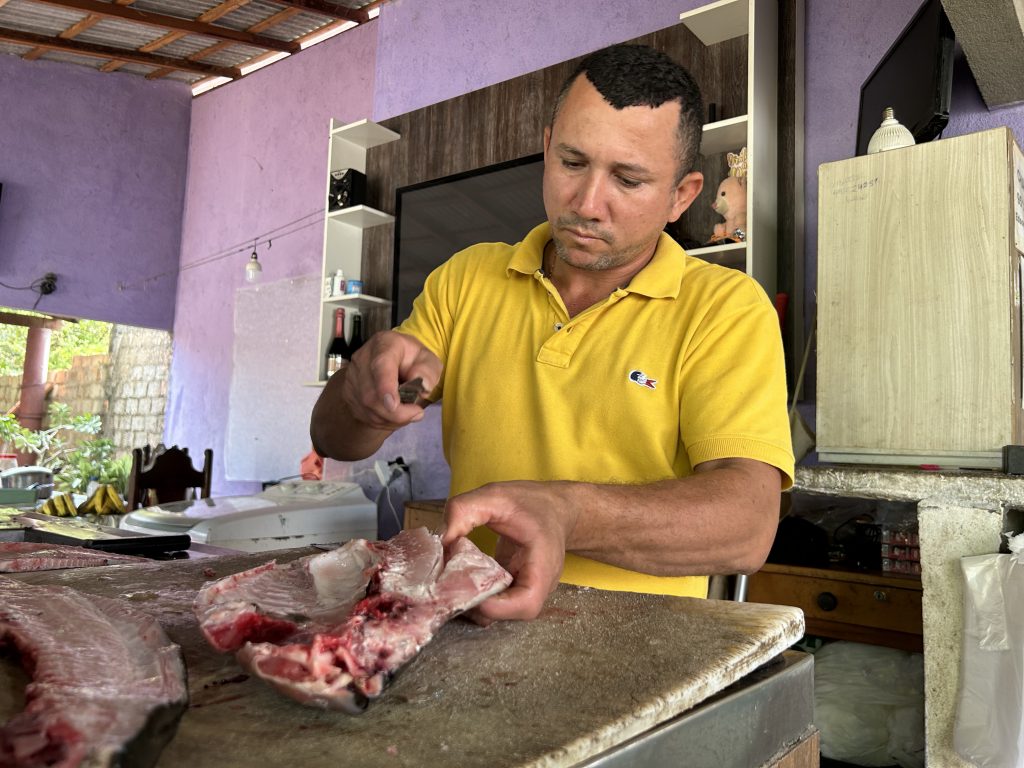
Another person affected by climate change in Roraima is recyclable material collector Elizeu Veloso dos Santos, who has been working in this field for over ten years. He cleans houses and collects recyclable materials in the Cidade Satélite neighborhood, in the western zone of Boa Vista.
“I see that society has changed a lot over time. About five years ago, when I walked through these streets, I found little trash, but now I find it in abundance. These environmental changes are greatly affecting my daily work routine. The heat is very intense, and I can no longer work at certain times of the day. I have already felt unwell, and I know friends who are also suffering from this. We spend all day in the streets, and the next day we can’t even get up due to exhaustion,” the collector reports.
For Edson, over the years, it has become increasingly difficult to deal with human beings, especially those who do not respect the ecosystem, whether by deforesting or polluting the rivers with garbage.
“We know that we should not deforest, but what humans do most is cut down trees and dump waste into the rivers. The environment can’t take it and will keep dying slowly. People throw trash into the rivers, which become polluted, and the fish die and disappear. All of this causes me great anguish and fear. I ask myself where we are heading,” he lamented.
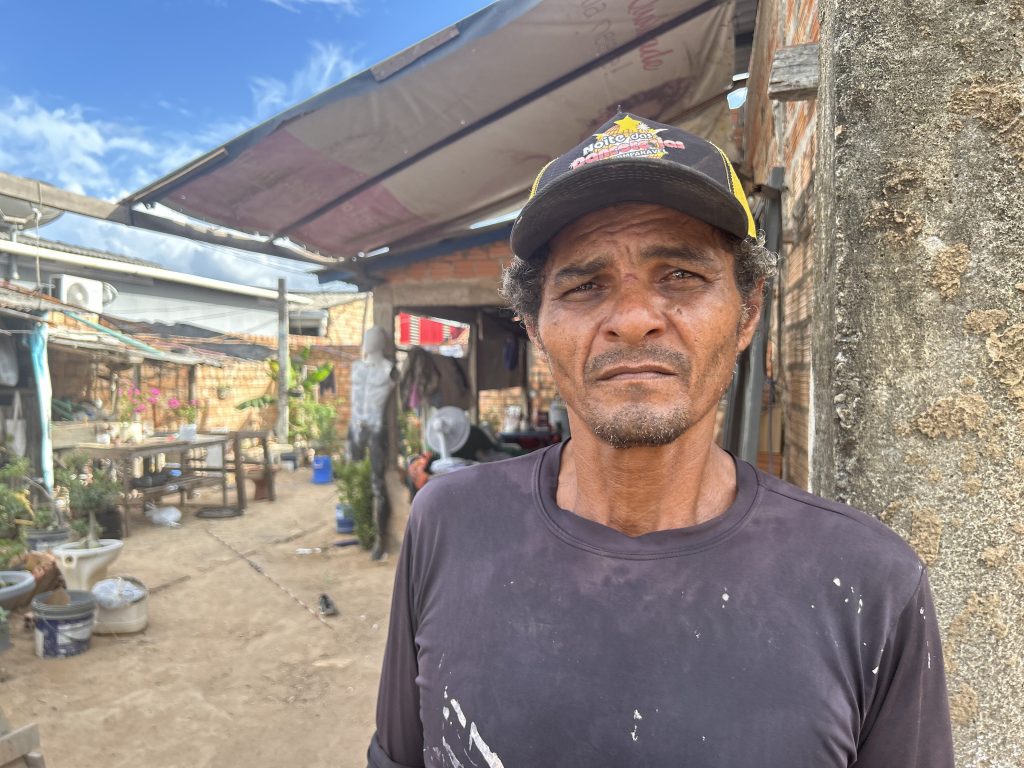
Paths
Psychologist Cristina Maranghello states that it is essential for traditional populations from Amazonas to have access to knowledge about climate change so they can deal with the issue with autonomy and critical thinking.
“Initiatives to reduce the environmental footprint and more sustainable ways of managing household resources are options that do not leave room for alarmist rhetoric. At the same time, these initiatives make populations the protagonists in facing adversity, with resilience and autonomy. We cannot overlook the great difference that psychological support makes for this population. With such support, patients become emotionally stronger when facing problems in general,” she explained.
Anxiety, the Word of the Year in Brazil
“Anxiety” was chosen as the word of the year for 2024 by Brazilians, according to a survey conducted by the Ideia Research Institute in partnership with Cause and PiniOn. The term was cited by 22% of respondents, ahead of words like “resilience” (21%), “artificial intelligence” (20%), “uncertainty” (20%), and “extremism” (4%).
Now in its ninth edition, the survey was conducted in two stages: first, communication and social science experts selected five words that reflect the 2024 landscape; then, the words were presented to 1,538 Brazilians from all five regions of the country, who chose the term that best represented the year’s dynamics and concerns. In 2023, the selected phrase was “climate change.”
Brazil is the most anxious country in the world, according to the World Health Organization (WHO). More than 18 million Brazilians suffer from anxiety disorders, accounting for about 9.3% of the population. The country ranks ahead of nations such as Paraguay (7.6%), Norway (7.4%), New Zealand (7.3%), and Australia (7%).
The Southern Brazilian Catastrophe
The heavy rains that hit Rio Grande do Sul (RS) between April and May 2024 also left deep marks on Brazilians’ mental health. A study by the Hospital de Clínicas de Porto Alegre (HCPA) revealed that 42% of evaluated participants developed symptoms of Post-Traumatic Stress Disorder (PTSD). PTSD is a type of anxiety disorder that can occur after traumatic events, such as the floods in that state.
Preliminary data from the study, led by psychiatrist and professor at the Federal University of Rio Grande do Sul (UFRGS), Simone Hauck, showed that 53.8% of respondents exhibited moderate to severe PTSD symptoms. The environmental catastrophe in RS affected 2.4 million people, resulting in 183 deaths and countless material, financial, and emotional losses for the population.
Health in the Forest
For remote communities from Amazonas, which often must travel to urban centers for medical care, telemedicine is an efficient solution. The Health in the Forest program, run by the Fundação Amazônia Sustentável (FAS), operates in 22 municipalities in Amazonas, providing medical, nursing, and psychological care, as well as training healthcare and community professionals in the region.
Created during the Covid-19 pandemic, the initiative has made a difference in remote communities, promoting mental health awareness through psychotherapy services. “This approach enhances quality of life and teaches techniques to manage symptoms such as anxiety and depression. Family conflicts are common in these communities, and psychotherapy via telehealth helps improve family relationships and resolve issues according to each family’s needs,” says Mickela Souza Costa, the program manager at FAS.
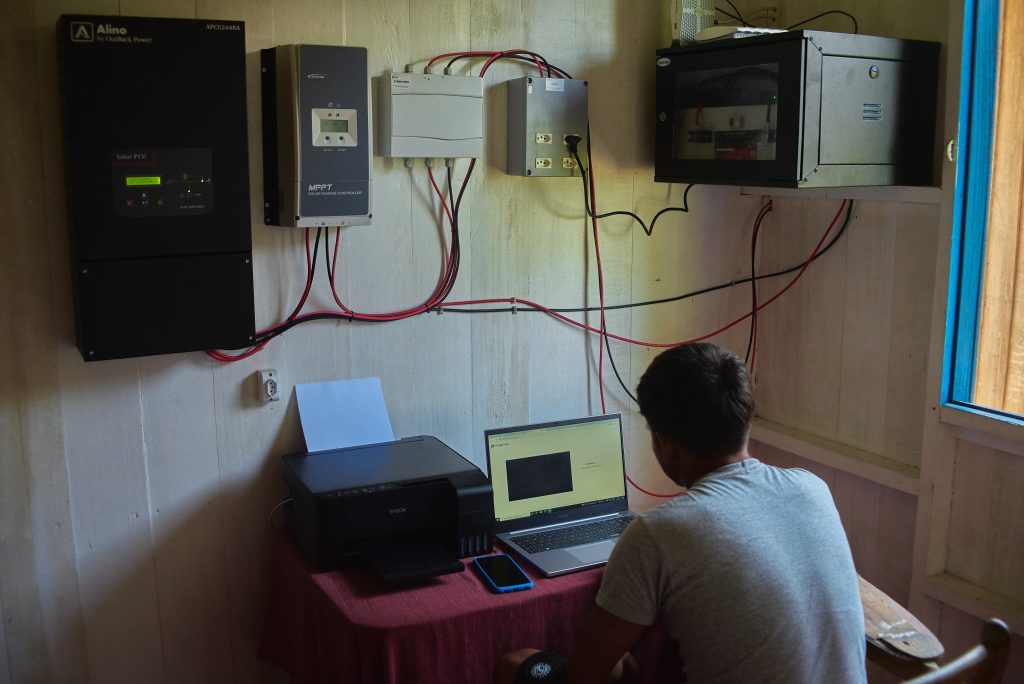
Feeling the Climate Crisis
Brazilians’ awareness of the climate crisis is growing. A Datafolha survey commissioned by the SOS Mata Atlântica Foundation and released in December 2024 shows that 75% of Brazilians feel the impacts of climate change in their daily lives.
The survey indicates that women (63%) and residents of capital cities (64%) are the most perceptive to the effects of the climate crisis in Brazil. It also revealed that 98% of the population believes the country suffers consequences from the deforestation of the Atlantic Forest, one of the world’s most biodiverse and threatened biomes, now with only 24% of its original forest cover remaining. Like the Amazon, the Atlantic Forest plays a crucial role in regulating climate and water resources.
Eco-Anxiety
First used by American psychologist and researcher Susan Clayton in the early 2000s, the term eco-anxiety, or climate anxiety, has been studied since 2007. According to Clayton, in an article published in Time in 2023, eco-anxiety is not a pathology but a complex emotional response to the effects of human actions on the environment. Symptoms include irritability, insomnia, inability to relax, lack of concentration, and panic attacks—similar to those of generalized anxiety disorder.
Beyond affecting mental health, climate anxiety influences decisions about the future. In a 2023 study conducted by Clayton with 1,000 participants, 70% of young people said the future is frightening. In an interview with NPR’s The Sound of Ideas podcast, the researcher highlighted that these feelings impact major life decisions, such as whether or not to have children.
In addition to seeking psychotherapy, those struggling with climate anxiety can engage in environmental activism to feel they are contributing to the fight against climate change. This includes staying informed, joining activist groups, and participating in environmental initiatives. Building emotional resilience is essential to prevent burnout, experts say.
Imbalance in the Territory and the Body
Populations most vulnerable to the effects of climate change, such as Indigenous peoples, riverine communities, quilombolas, and traditional communities, are also the most sensitive to eco-anxiety. According to Pedro Tukano, Indigenous activist and coordinator of the Miriã Mahsã collective in Manaus (AM), climate change profoundly alters not only the ways of life of Indigenous peoples but also their relationship with their ancestral territories.
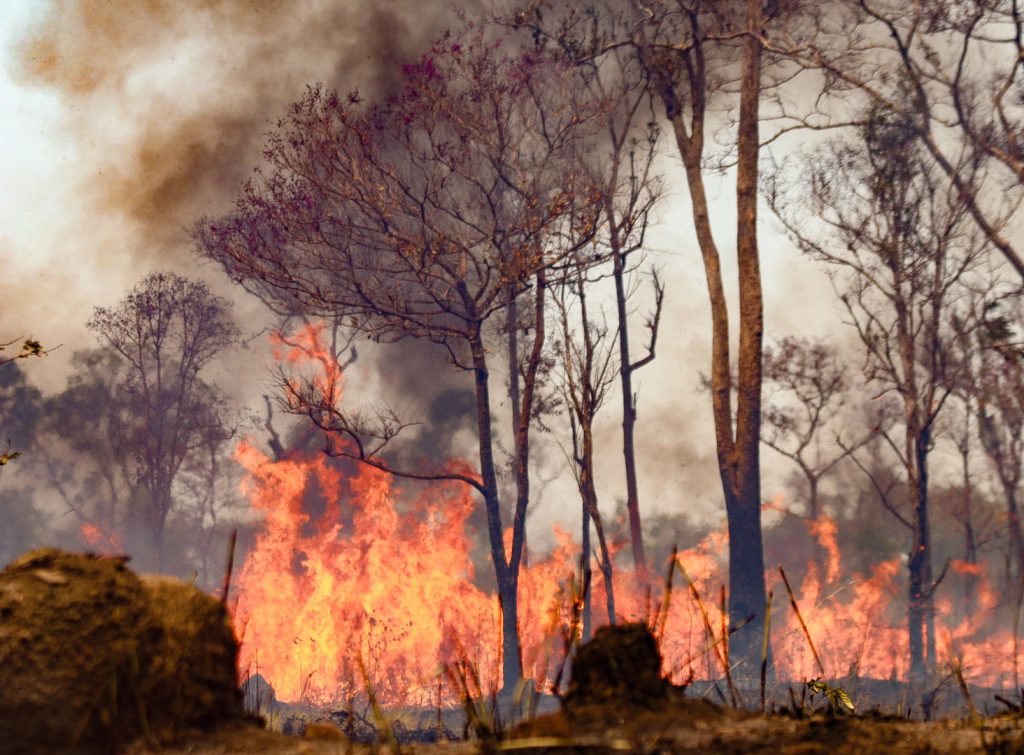
“For many of us, the relationship with the territory is something sacred. With the imbalance of the body and the territory, there is an imbalance in mental health, making both body and mind ill. Living with drought, wildfires, smoke, and deforestation brings insecurity to territorial life,” said Pedro.
Data from the report Amazon on the Brink of Collapse, by the Coordination of Indigenous Organizations of the Brazilian Amazon (Coiab), show that 42 Indigenous Territories (ITs) in the region experienced extreme drought in 2024. This means water scarcity, the complete drying of rivers in various areas, and significant losses of crops, pastures, and forests. More than 3,000 Indigenous households, 110 schools, and 40 healthcare units in ITs of the Brazilian Amazon were affected by the extreme drought.
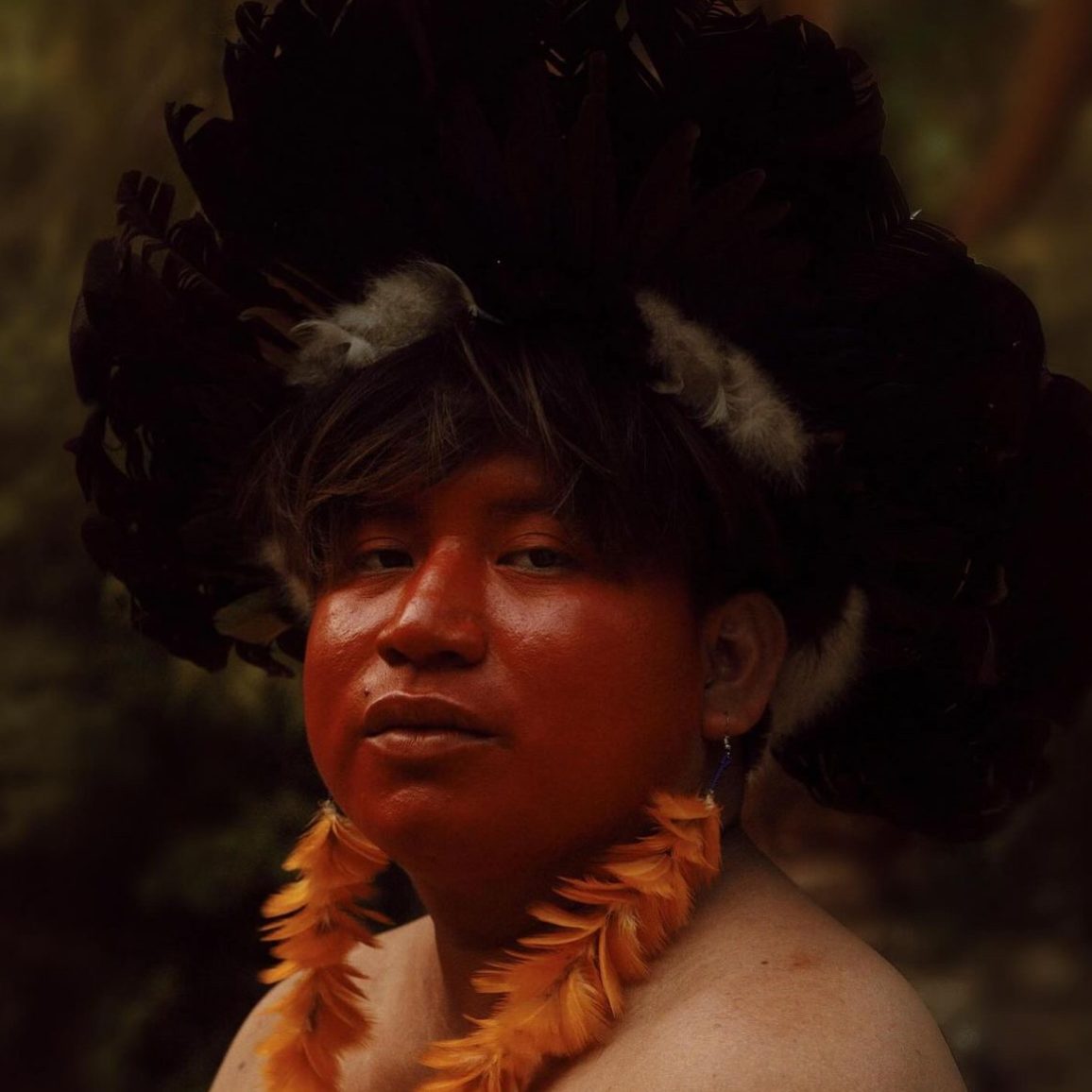
“Living in this context and striving to solve the problems created by non-Indigenous ambition ends up overloading the minds of many young Indigenous people. Moreover, this situation forces many families to migrate, either deeper into the same region or toward urban areas, which leads to other forms of exhaustion and mental strain,” comments the young Indigenous leader.
The climate crisis adds to other threats faced by Indigenous peoples, such as invasions, environmental crimes, predatory enterprises, racism, and lack of access to basic rights. These challenges impact the mental health of Indigenous communities. According to a study by the Oswaldo Cruz Foundation (Fiocruz), Indigenous people had the highest suicide rate in the country in 2022: 16.58 cases per 100,000 inhabitants, compared to 7.27 in the general population.
Pedro believes it is important to start discussing climate anxiety with Indigenous populations. “There is already an ongoing discussion about mental health and the well-being of Indigenous peoples, where various factors are addressed, including suicide, especially among youth. It is necessary to start thinking about actions to engage in dialogue and mitigate the consequences of climate change on Indigenous mental health,” he emphasized.

